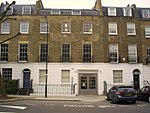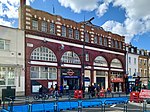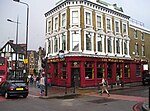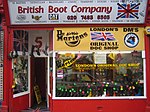Church of Our Lady of Hal, Camden
1933 establishments in EnglandBuildings and structures in the London Borough of CamdenCamden TownChurches in the Roman Catholic Diocese of Westminster

Our Lady of Hal is the Catholic parish church for the Camden Town area of London. The church was completed in 1933, and was under the authority of the Missionary Fathers of Scheut in Belgium until it came under the Catholic Diocese of Westminster in 1982. The church is the site for the English shrine to Our Lady of Hal, a medieval statue believed to be miraculous, in Halle, Belgium.
Excerpt from the Wikipedia article Church of Our Lady of Hal, Camden (License: CC BY-SA 3.0, Authors, Images).Church of Our Lady of Hal, Camden
Arlington Road, London Chalk Farm (London Borough of Camden)
Geographical coordinates (GPS) Address External links Nearby Places Show on map
Geographical coordinates (GPS)
| Latitude | Longitude |
|---|---|
| N 51.538055555556 ° | E -0.14361111111111 ° |
Address
Our Lady of Hal
Arlington Road
NW1 7HP London, Chalk Farm (London Borough of Camden)
England, United Kingdom
Open on Google Maps









